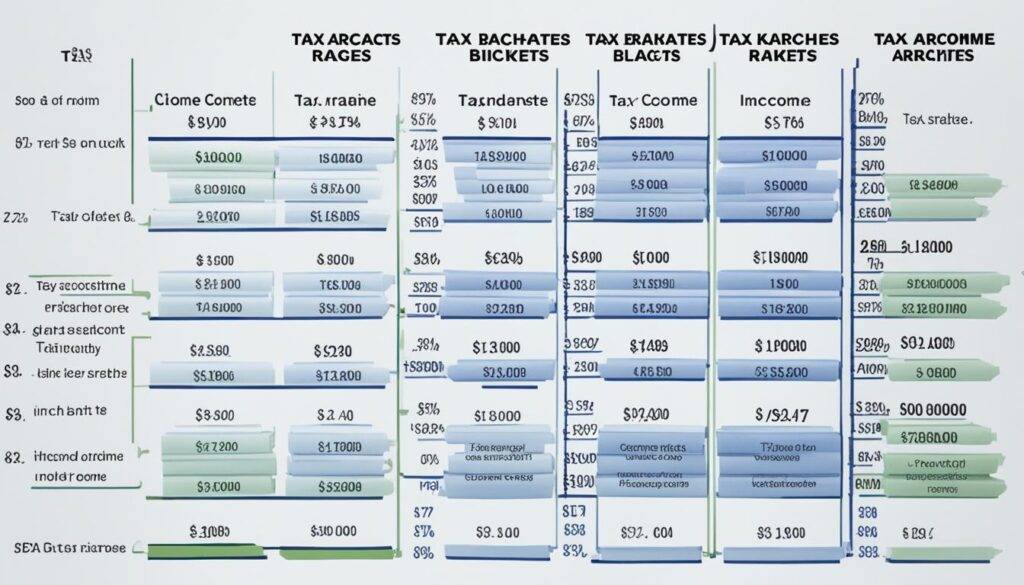Welcome to our comprehensive guide on the basics of income tax. Whether you're a seasoned taxpayer or just starting your journey, understanding the ins and outs of your tax bracket is essential for effective tax planning and maximizing your financial well-being.
Income tax is a fundamental part of our lives, and it helps support various government programs and initiatives. By familiarizing yourself with tax brackets, you can better navigate the tax filing process and ensure that you are fulfilling your tax obligations while optimizing your tax liability.
So, what exactly are tax brackets? Tax brackets are the range of income levels and corresponding tax rates set by the Internal Revenue Service (IRS) that determine how much income tax you owe. Contrary to popular belief, your entire income is not taxed at the same rate. Instead, your income is taxed progressively, with different portions falling into different tax brackets.
To determine which tax bracket applies to you, you need to calculate your taxable income. This is the income you earned during the year minus any applicable deductions and exemptions. Once you have calculated your taxable income, you can refer to the IRS tax brackets to identify the corresponding tax rate that applies to your income range.
Understanding tax legislation and keeping abreast of any changes is crucial for accurate tax filing. Tax laws can evolve, which may impact tax brackets, deductions, and credits available to taxpayers. Staying informed about these changes ensures that you are complying with the current regulations and taking advantage of any tax-saving opportunities.
Additionally, it's essential to familiarize yourself with IRS tax forms, as they are the foundation of the tax filing process. From the basic Form 1040 to various schedules, knowing how to navigate these forms and accurately report your income, deductions, and credits is vital.
Throughout this guide, we will delve into the details of income tax, tax brackets, tax filing, taxable income calculation, tax legislation, and the significance of understanding IRS tax forms. By the end, you'll have the knowledge and confidence to make informed decisions when it comes to managing your taxes.
Key Takeaways:
- Understanding tax brackets is crucial for effective tax planning and optimizing your tax liability.
- Tax brackets determine how much income tax you owe based on your income range.
- Calculate your taxable income by subtracting deductions and exemptions from your total income.
- Stay informed about tax legislation changes to ensure compliance and take advantage of tax-saving opportunities.
- Get familiar with IRS tax forms, as they are the basis of the tax filing process.
Maximizing Your Tax Deductions and Credits

In order to optimize your tax filings and minimize your overall tax liability, it's important to understand and take advantage of the various tax deductions and tax credits that are available to you. While deductions reduce your taxable income, credits directly reduce the amount of tax you owe.
Let's start by exploring the difference between deductions and credits:
- Tax deductions: These are expenses that you can subtract from your taxable income. Common deductions include mortgage interest, medical expenses, and charitable contributions. By claiming deductions, you can lower your overall taxable income, which in turn reduces the amount of tax you owe.
- Tax credits: These are directly subtracted from the amount of tax you owe. Credits are more valuable than deductions because they provide a dollar-for-dollar reduction in your tax liability. Common credits include the Child Tax Credit, Earned Income Tax Credit, and Education credits.
Now, let's explore some commonly available deductions and credits:
| Deductions | Credits |
|---|---|
| Mortgage interest | Child Tax Credit |
| Medical expenses | Earned Income Tax Credit |
| Charitable contributions | Education credits |
Remember that some deductions and credits have specific eligibility criteria, so it's important to familiarize yourself with the IRS guidelines and requirements. Additionally, there are exemptions for certain types of income, known as tax-exempt income, such as interest earned on municipal bonds or income from some qualified retirement plans.
To make the most of these deductions and credits, effective tax planning is crucial. By strategically managing your finances and timing certain expenses, you can maximize your tax savings. Consider consulting a tax professional or using tax planning software to ensure you're taking advantage of all available deductions and credits.
When it comes to maximizing your tax deductions and credits, it's important to stay informed about changes in tax legislation and updates to IRS tax forms. By keeping up to date with the latest tax laws and regulations, you can ensure accurate and efficient tax filing.

The Importance of Tax Planning
Tax planning plays a crucial role in managing your overall tax liability. By proactively taking steps to minimize your taxes, you can maximize your financial resources and achieve your financial goals. Effective tax planning involves careful consideration of your income, investments, deductions, and credits to optimize your tax situation. It's important to review your financial situation regularly, especially before the end of the tax year, to identify potential tax-saving strategies.
Some key strategies for effective tax planning include:
- Maximizing retirement contributions to reduce taxable income
- Timing certain expenses to maximize deductions in the current tax year
- Utilizing tax-advantaged accounts, such as Health Savings Accounts (HSAs) or Flexible Spending Accounts (FSAs)
- Seeking professional advice and guidance from a tax advisor or certified public accountant
By implementing these strategies and staying proactive in your tax planning efforts, you can minimize your tax liability and keep more of your hard-earned money.
Navigating the Complexity of Tax Brackets
When it comes to understanding your tax liabilities, the concept of tax brackets plays a crucial role. Tax brackets are the ranges of income that determine the percentage of income tax you owe to the government. By understanding how tax brackets work, you can make informed decisions when it's time to file your taxes.
So, how are tax brackets structured? Tax brackets are typically divided into different income ranges, each assigned a specific tax rate. As your taxable income falls within a particular bracket, the corresponding tax rate will apply to that portion of your earnings. It's important to note that only the income within each bracket is subject to the designated tax rate, not your entire income.
Calculating your taxable income is essential for determining the appropriate tax bracket and avoiding any underpayment or overpayment. Taxable income is calculated by subtracting any allowable deductions and exemptions from your total income. By staying updated with the latest tax legislation, you can ensure that you are accurately calculating your taxable income and selecting the appropriate tax bracket.
Navigating tax brackets requires careful consideration of your income and tax liabilities, and it's always beneficial to seek guidance from tax professionals or utilize tax software to help determine the optimal tax bracket for your specific circumstances. Properly understanding tax brackets will not only help you comply with tax laws but also maximize your tax savings and minimize any potential penalties.



